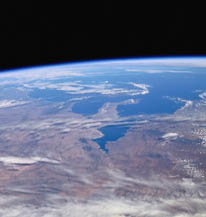The public has become increasingly anxious about what the nuclear industry intends to do with all the accumulating nuclear waste. Various options have been put forward, and they range from dispatching the waste into space on the back of a rocket to dropping it judiciously into the Mid-Atlantic trench and leaving movements of the earth's crust to take the waste ever deeper. Other choices include drilling bore holes several thousands of meters deep either into rock or on land or out at sea, digging out caverns, again either on land or at sea (with a tunnel to the land) or building mausoleum-like structures on the surface of the land. The industry believes that different kinds of nuclear wastes need different kinds of disposal. The most radioactive obviously needs the greatest care - and the deepest disposal - whereas low-level waste requires little more than sub-surface disposal, not very different from modern methods of landfill. If spent fuel has been reprocessed, the disposal of waste requires a somewhat different approach than if the fuel has been left intact, as is now the practice in countries such as the United States and to an increasing extent in Sweden. In the United States the consensus both within the nuclear industry and the environmental movement is that the spent fuel should be stored in special self-cooling structures, designed to draw in a natural circulation of air. Nevertheless, spent fuel is accumulating at a considerable rate, threatening to clog the system before sufficient facilities can be built. More than 20,000 spent fuel assemblies - the product of little more than 20 years of reactor operation - are now stored temporarily in spent fuel ponds throughout the United States, and the number is increasing by some 4,000 each year. By the end of this year the number could be 300,000.
What happened to the Plutonium 235 at Chernoble CZT Radiation Sensors for homeland security cargo, and low-power mobile applications. -- http://www.rftrax.com 
 
|

What to do in the Event of a Nuclear Accident | Dosimeters
Plutonium | Particle Physics | Disposal | Hayward Faultline

FindLaw Firms Online -- 11222 Web Sites for the Legal Community.
New! Robots for Geologists | Friends | Home Preparation
Area Geology | Public Health | If It Rains | Estimates for Geologists
Computational Physics
Neutron Absorbers | Bay Area Patents Office
Do Not Under-Estimate and Loose Your Best Man and Valuable Rescue Teams! Prepare an emergency crew to decide how to use robotics to achieve solutions to immediate problems. DO NOT USE PEOPLE TO TAKE ASSESSMENT DATA OR TO RESCUE OTHER WORKERS. View government VIDEOS about measures which have been taken, mistakes in the field which have been made in the past. Know the Effects of fissile Plutonium-235 on the body and follow directions exactly. Know the Affects of Trauma and Make Decisions Collectively. Heed the Advice of Those Who Know Do not hesitate to USE CAUTION and - - - ROBOTS ONLY- - - Each community has differing needs, and these needs may be met within the capacity of the immediate technological community. Every Community College has Technology and Robotics Programs. Do Not Hesitate to Use Immediate Personnel and Resources to reach solutions. All Terrain Robots for Geology: These need not be Expensive Stainless steel Robots! You could design a cloth robot to accomplish outside jobs!